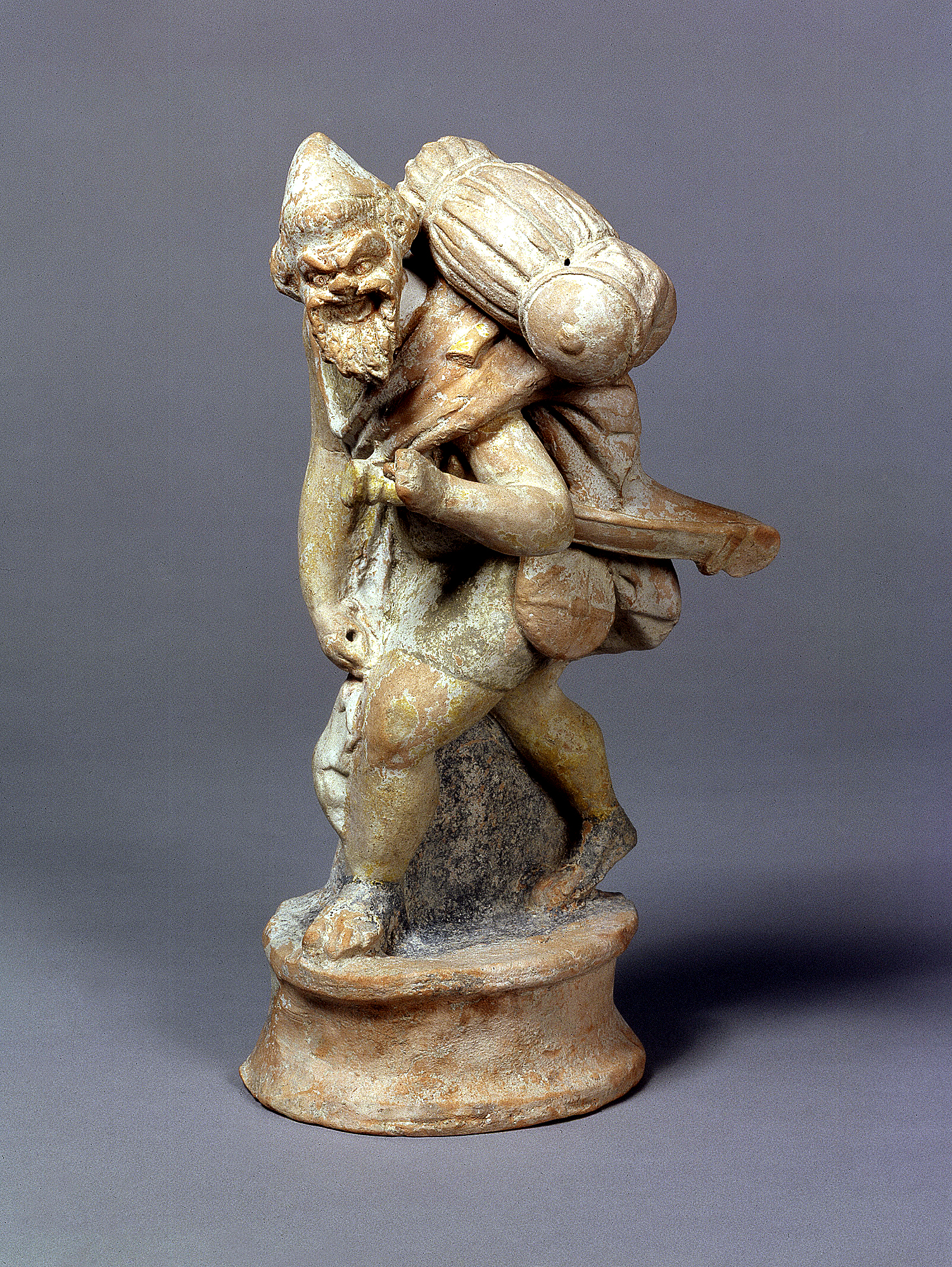Getty exhibit shows how the stage is still constant after centuries

(Photo courtesy of Getty Villa)
By Jennifer Ta
Aug. 30, 2010 2:01 a.m.
As more people produce more art these days than ever before, it’s easy to forget the ancient Greek traditions that remain the foundation for a large part of that work.
Now after seven years of meticulous searching and bringing back objects from around the world, the Getty Villa is opening “The Art of Ancient Greek Theater” exhibition. This exhibition delves deeply into the past to explore the foundations of theater, and examines the artistic depictions of ancient Greek theater throughout the Mediterranean between the fifth and first centuries B.C.
The objects displayed include vases, terra-cotta, statuettes and fragmented papyrus of ancient plays.
The exhibition provides a historical look at the beginnings of ancient Greek theater, as well as the emergence of tragedy and comedy. The vases provide a narrative, helping to show why performance was important to those living in ancient times. For example, one of the exhibit’s main vases depicts the religious aspect of theater by portraying Dionysus, the god of theater, wine and transformation, watching a performer.
“(Dionysus) is shown just sitting; everyone’s attention is on the performer,” said Mary Louise Hart, associate curator of antiquities and UCLA alumna. “They are all watching the figure on the right ““ (the performer who is) in ecstasy for the god. She is the most beautiful figure in the show. This shows the importance of the physical being, and of moving in theater.”
The vases also help shed light on ancient Greek theater’s emphasis on the idea of theater being a cathartic experience.
“Wine was used as a vehicle for becoming transformed into another state of being,” Hart said. “Theater then became another state of being, whereby you are performing for somebody else, being a magical tableau for the audience. The mask is a symbol for that transformation as well as a symbol for Dionysus.”
Meanwhile, the terra-cotta figurines give insight into how the actors dress up for a performance. The figurines are perhaps the most detailed in terms of facial expression: The expressions of the actors can be easily discerned compared to the images on the vases.
While the exhibition helps to provide major historical details on the progression of theater as well as the way ancient Greeks viewed theater, the true value of the exhibition comes from the light it sheds on contemporary times.
“All of the theater we have today is from ancient Greek theater,” said Karol Wight, senior curator of antiquities and UCLA alumna. “The themes of the plays are still resonant. It does not matter (if they were) performed 2,500 years ago or if they were performed a few weeks ago, the themes are the same. They are all about humanity and what our lives are like and the experiences we have.”
The exhibition also coincides with the Getty Villa’s annual outdoor theater performance in September. This year, the performance will be Sophocles’ “Elektra” which was chosen in large part because of the exhibition.
“Looking at the objects, you see repeated representations of Elektra,” said Carey Perloff, the director of the play. “We wanted to do “˜Elektra’ because people will recognize it when they see it. It has everything in it that you want: great argument, great characters, love, betrayal and justice.”
Like Wight, Perloff sees the importance of Greek theater for society today.
“These plays ask one big question: How should we behave in a world of injustice? What should we do?” Perloff said. “The audience wrestled with these big questions that we’re still in the middle of today. All of the things we are torn about today in our own political culture are there in these plays.”
According to Perloff, the ancient Greeks also understood what it meant and what it took to put on a good show, and she tries to follow this example.
“Everything was very specific,” Perloff said. “It was all really immediate. The ancient Greeks rehearse all year for that one performance. I just try to follow that same track and make that one performance the very best.”


